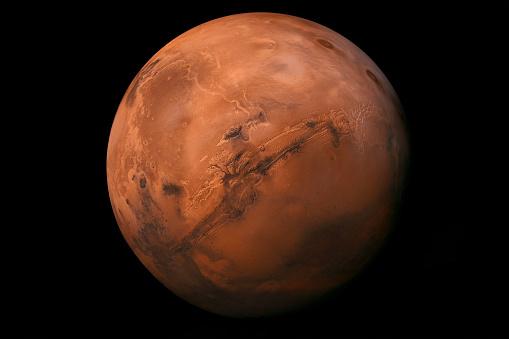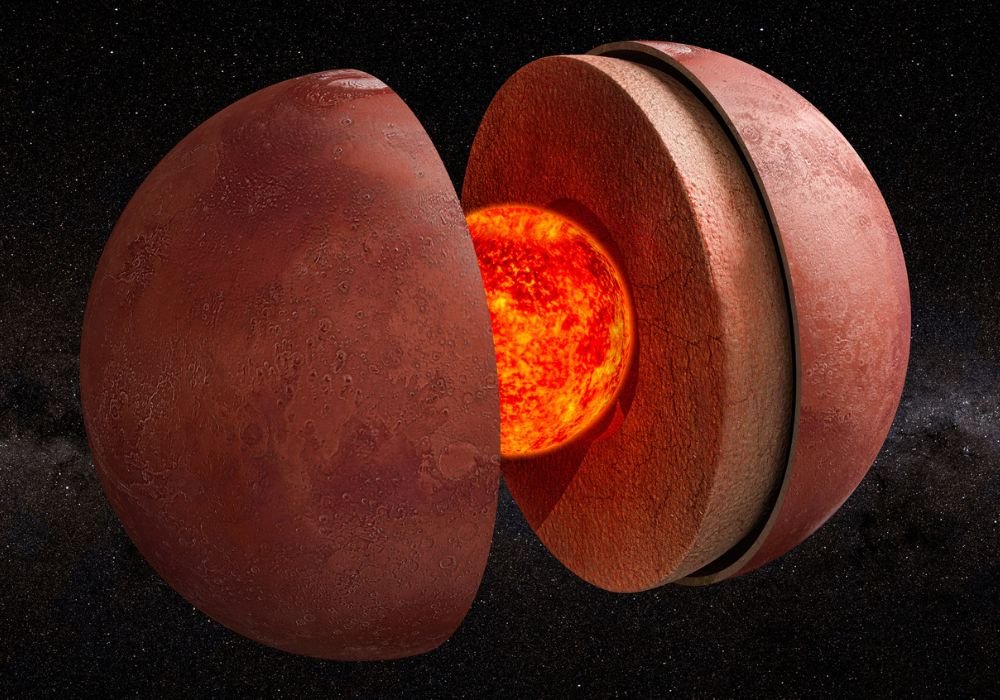Two new studies published in the journal nature is changing Scientists’ opinions about the core of Mars. This is because it was previously believed that the red planet’s interior was large and not very dense.
But new research conducted by NASA’s InSight mission has discovered that the planet’s core is covered in a layer of molten silicate rock, a mineral that is highly abundant on Earth. Studies also concluded that the mantle consists of a liquid metallic alloy rich in elements such as sulfur and oxygen.
This was made possible by mapping seismic activities. When an earthquake occurs, the waves released during this process are reflected differently on each material they hit. In this way, scientists were able to discover the type of material transported into Mars during earthquakes.
The method is not new, but has also been used to understand the core of planet Earth, as one of the study’s co-authors, University of Maryland geology professor Vedran Lekic, explains: “In 1906, scientists discovered for the first time by looking at how seismic waves from earthquakes are affected as they travel through materials.” “Over a hundred years later, we have been able to apply our knowledge of seismic waves to Mars. With InSight, we are finally discovering what makes Mars’ core and the red planet so similar but also different from Earth.”
This information was important not only for understanding the type of material that makes up the planet’s core, but also for knowing more precisely its size and density. With the discovery, scientists now believe that the interior of Mars is smaller and denser than previously believed.
Effects on temperature and magnetic field
The information obtained by NASA is more important because by understanding the formation of Mars’ core, other mysteries will be better understood by researchers.

“Not only does the blanket insulate heat from the core and prevent it from cooling, it also concentrates radioactive elements whose decomposition produces heat. When this happens, it is possible that the core is unable to produce convective movements that create a magnetic field, which may explain why Mars does not currently have an active magnetic field around it.” .” added Lekic.
This means that studies need to be expanded in the coming years. Advances in Mars exploration depend on information obtained about the composition of Mars’ core and the planet as a whole..
Earthquakes should remain the subject of fundamental analysis. Recently, data was announced that the largest earthquake ever recorded on Mars reached a magnitude of 4.7 on the Richter Scale. This is just one of more than 1,300 earthquakes recorded on the red planet in the last 5 years.
Stay up to date with new astronomical discoveries at TecMundo. If you wish, take the opportunity to learn which are the 5 objects found on Mars that suggest signs of aliens (but are not!).
Source: Tec Mundo
I’m Blaine Morgan, an experienced journalist and writer with over 8 years of experience in the tech industry. My expertise lies in writing about technology news and trends, covering everything from cutting-edge gadgets to emerging software developments. I’ve written for several leading publications including Gadget Onus where I am an author.












